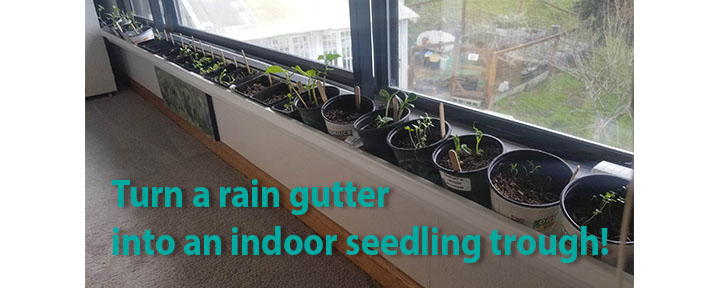
Getting a head start on my veggie garden – one of the benefits of sheltering in place! I’ve always bought starter plants at the nursery because I could never grow plants from seeds. I think I was too impatient and got busy with other things after planting the seeds so they just dried up or wilted. But this year, I tried something new.
Using a 10-foot rain gutter with end caps, I screwed it below my south-facing window in my office. My thought: it’s the warmest spot in the building and I pass it about a dozen times per day so I can’t forget about it. I planted 26 different types of veggies in individual containers and watered them. Within 2-3 days, 24 seedling varieties popped up. I carefully misted them with water twice a day and they’re thriving.
I’ll move them to the kitchen window sill until spring, and then I’ll plant them in my aquaponics media beds and in dirt pots in the greenhouse. If I’m brave enough, I might experiment with planting them in planter boxes in my garden, but they’ll probably just be donations or gifts to the gophers.
I plan to keep starting new seeds every month to keep a constant flow of veggies to eat all season. Well, that’s my plan for now. I don’t have a green thumb and have never grown enough veggies for my family. Maybe this will be one positive thing to come out of this pandemic.
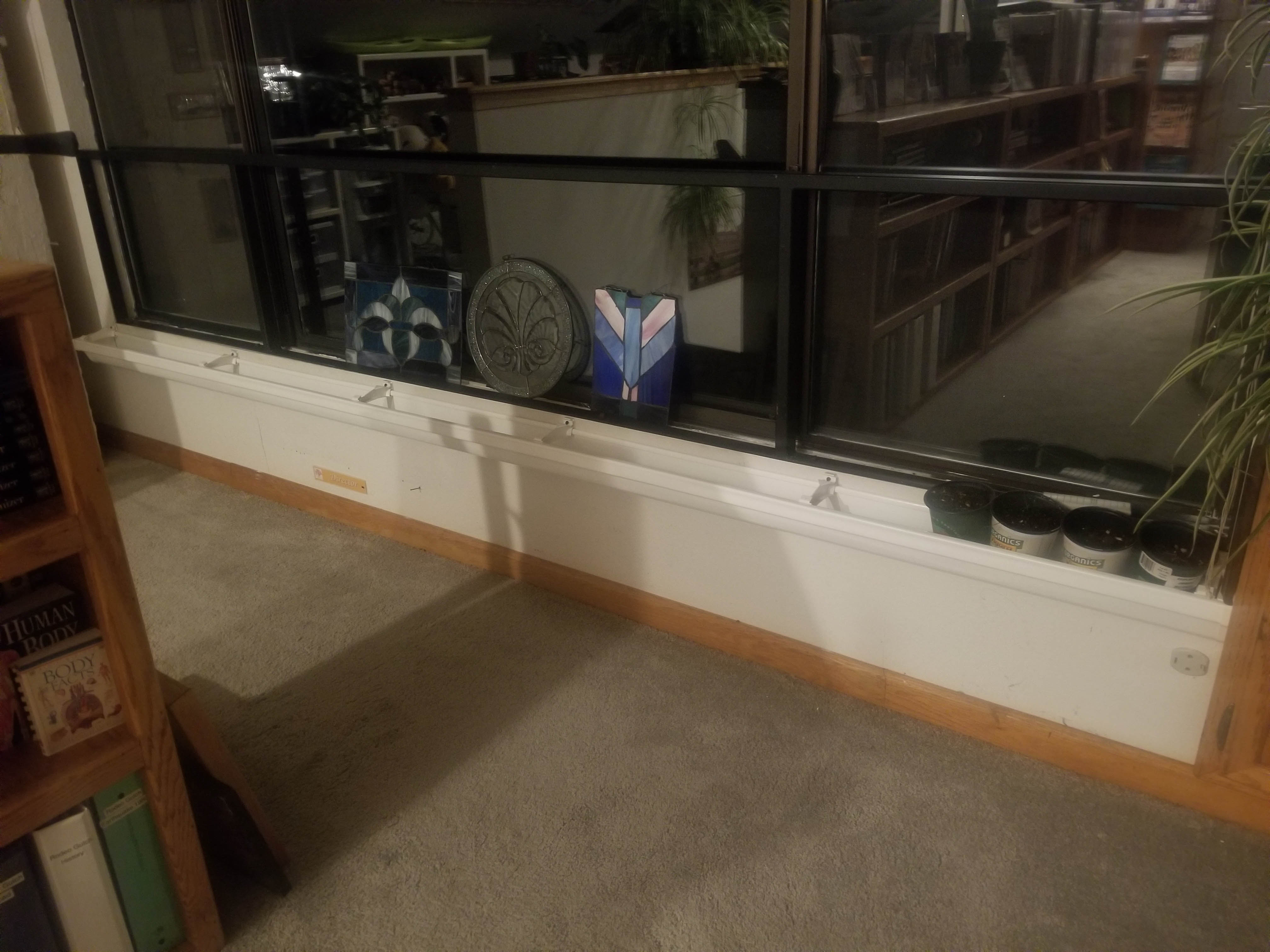
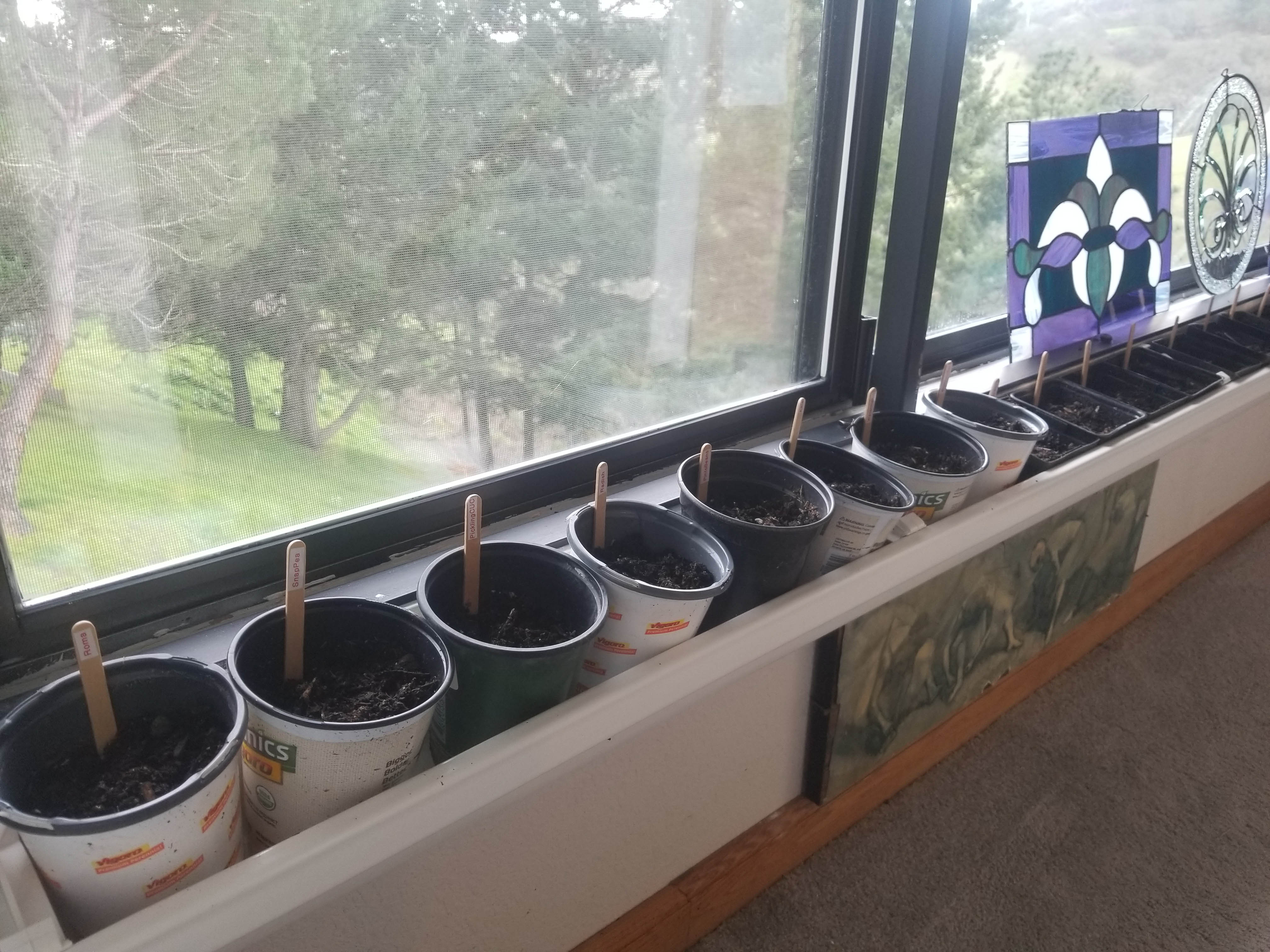
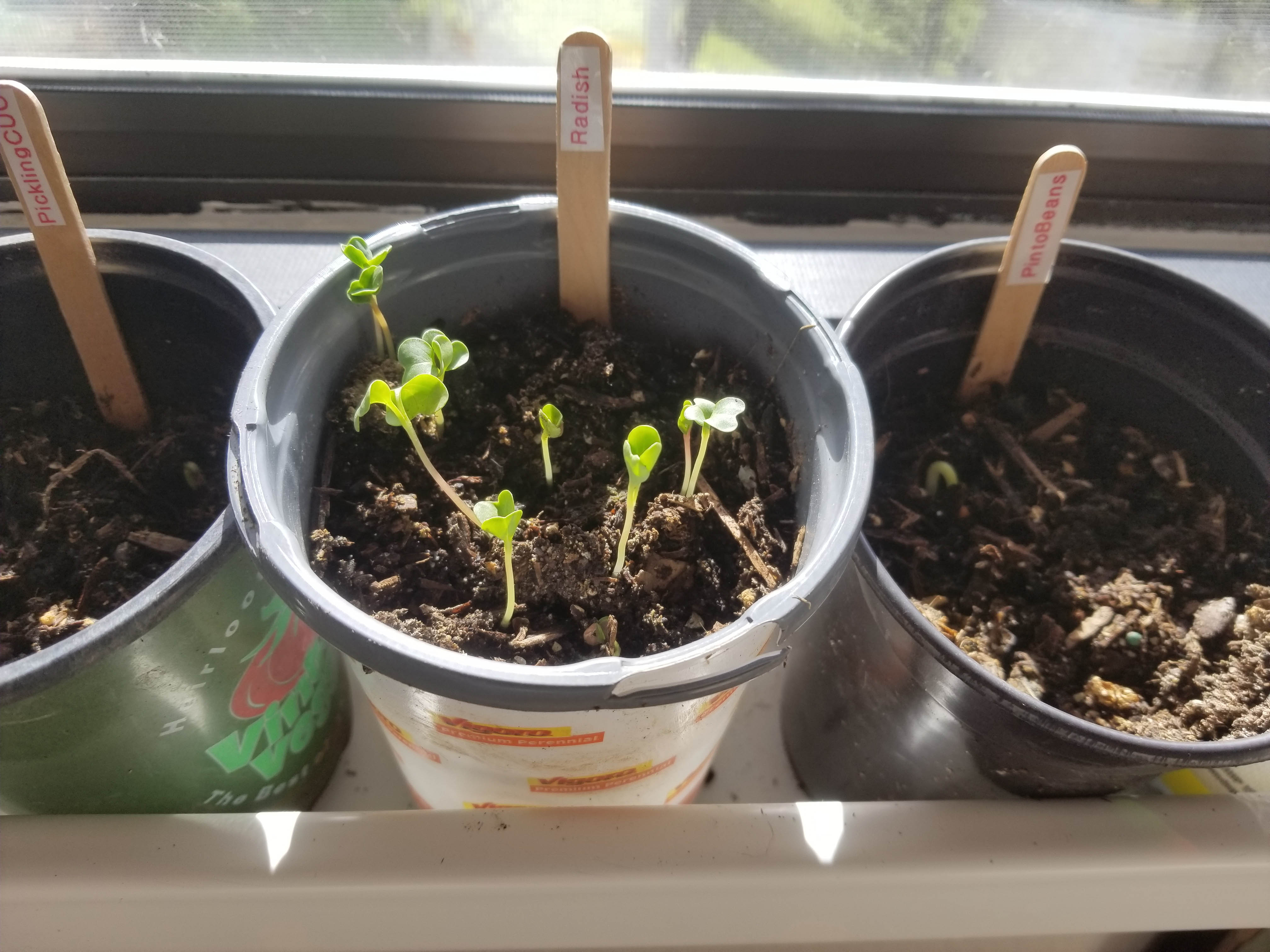
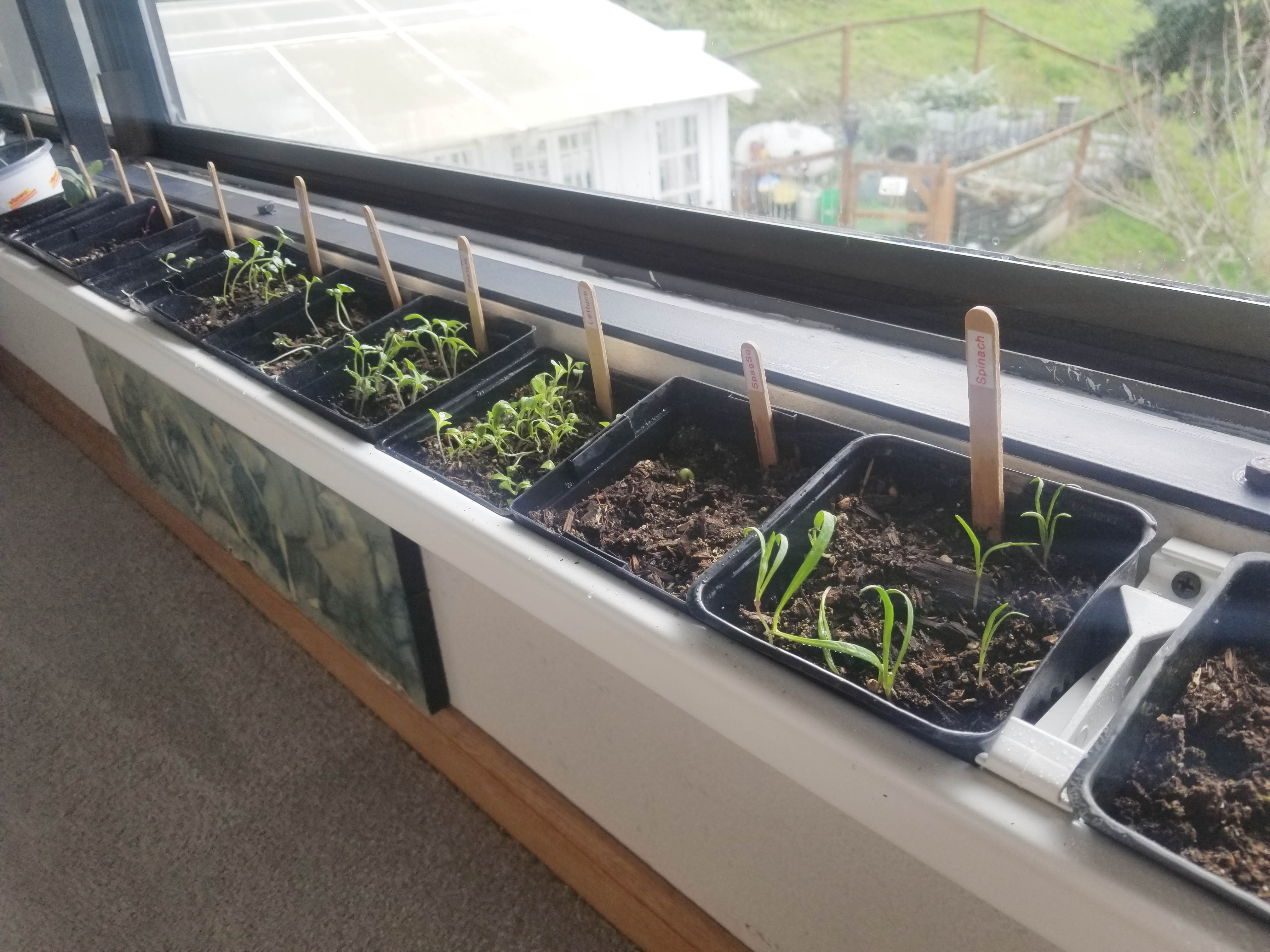

Getting a head start on my veggie garden – one of the benefits of sheltering in place! I’ve always bought starter plants at the nursery because I could never grow plants from seeds. I think I was too impatient and got busy with other things after planting the seeds so they just dried up or wilted. But this year, I tried something new.
Using a 10-foot rain gutter with end caps, I screwed it below my south-facing window in my office. My thought: it’s the warmest spot in the building and I pass it about a dozen times per day so I can’t forget about it. I planted 26 different types of veggies in individual containers and watered them. Within 2-3 days, 24 seedling varieties popped up. I carefully misted them with water twice a day and they’re thriving.
I’ll move them to the kitchen window sill until spring, and then I’ll plant them in my aquaponics media beds and in dirt pots in the greenhouse. If I’m brave enough, I might experiment with planting them in planter boxes in my garden, but they’ll probably just be donations or gifts to the gophers.
I plan to keep starting new seeds every month to keep a constant flow of veggies to eat all season. Well, that’s my plan for now. I don’t have a green thumb and have never grown enough veggies for my family. Maybe this will be one positive thing to come out of this pandemic.




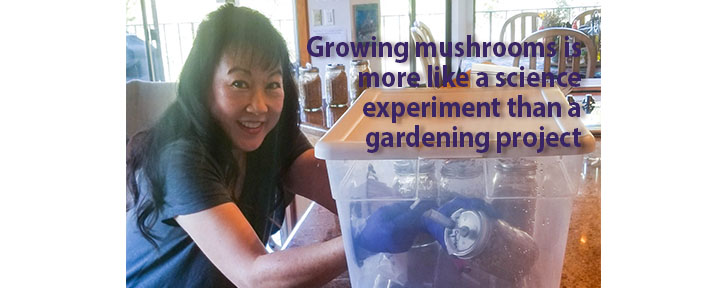
Just because mushrooms grow in forests, under trees, and in unexpected areas does NOT mean that they’re easy to grow. On my first attempt, I bought mycelium spawn that was completely ready to go into grain. I prepared 4 beds in the greenhouse and 4 beds in an outdoor mushroom grove. So far, I have only gotten one batch of Golden Oyster mushrooms – still it was exciting, and delicious. But my other 7 beds haven’t produced any mushrooms. Ugh.
Today, I inoculated millet grains that I soaked, cooked, and sterilized. This time, I bought the mycelium syringes filled with 7 different types of mushrooms spawn. I even made a glove box to prevent contamination – one of the biggest problems with growing mushrooms. I learned how to use a lighter to flame sanitize the needle (think: drug addict!) and carefully inoculated 12 jars of mycelium in my glove box.
I have to admit that I enjoyed conducting this science experiment in my kitchen. I watched dozens of YouTube videos and worked with one of my Merit Specialists to get detailed instructions. Now my grain jars are sitting in my office, living room, and bedroom closet waiting for the mycelium to grow. Once they completely fill the jars, I’ll put them in the beds I’ve made with a new batch of substrate (soil, compost, coffee grounds, and sawdust). That’s where they actually turn into mushrooms. Learning something new every day!

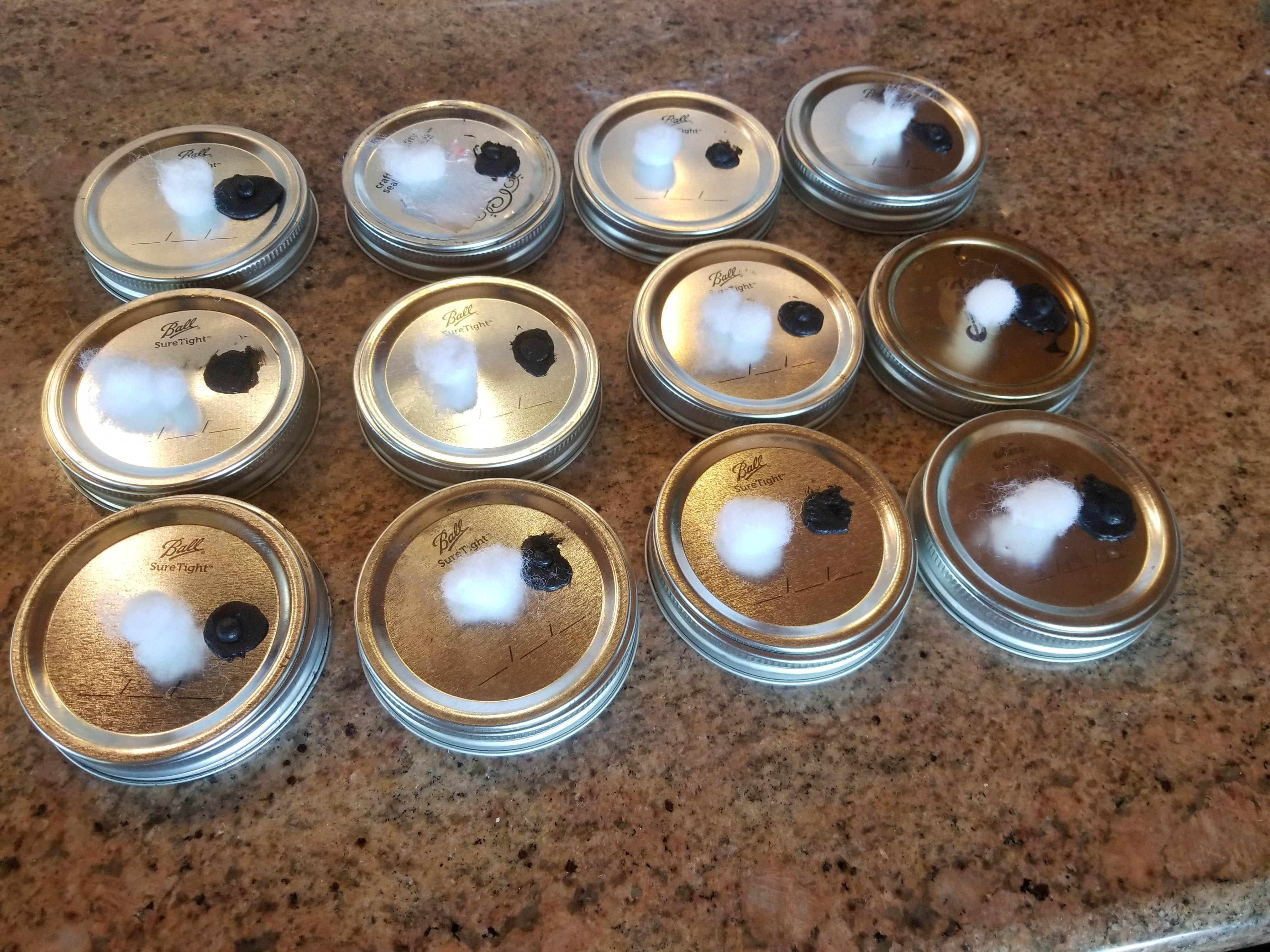

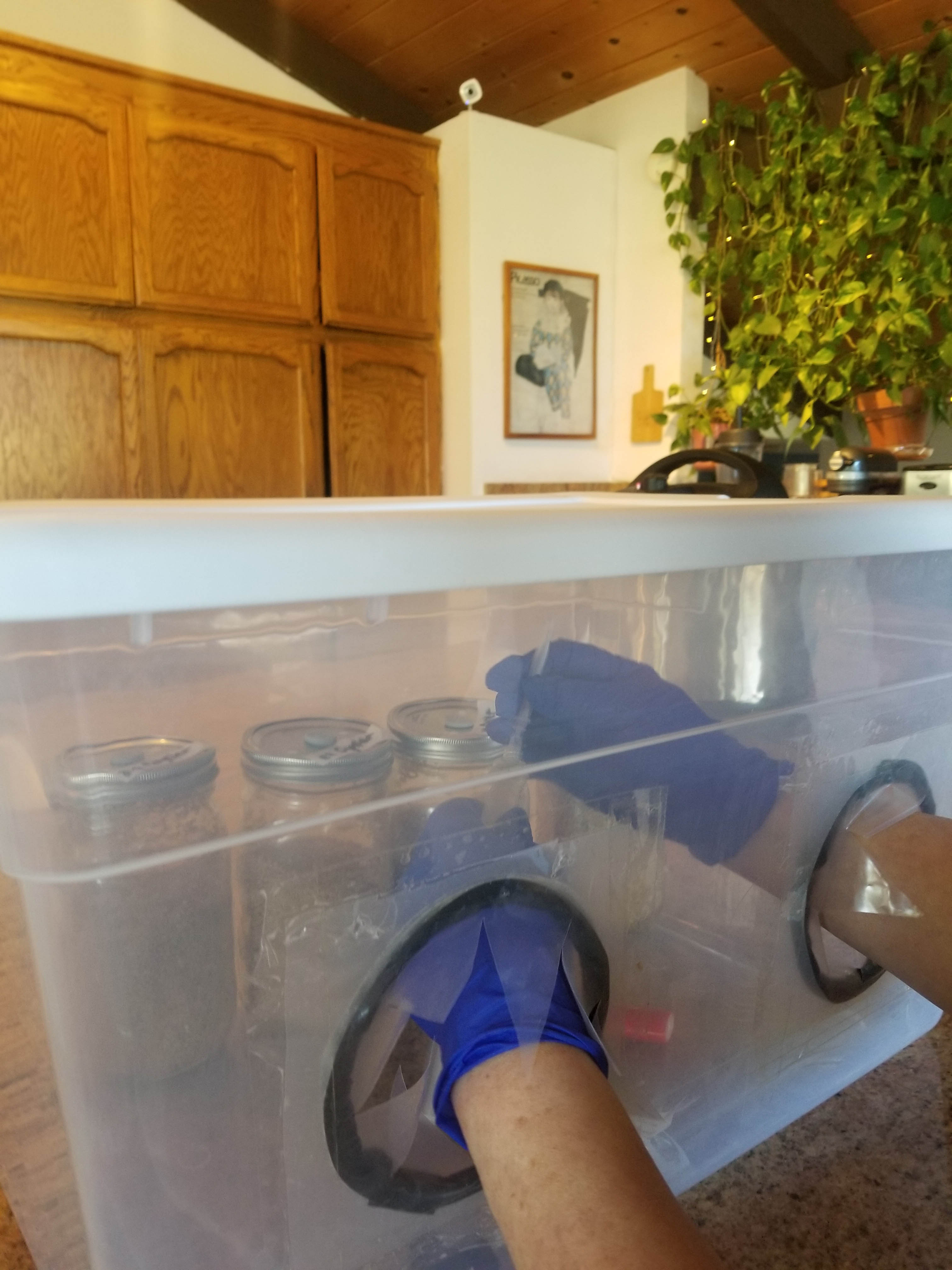
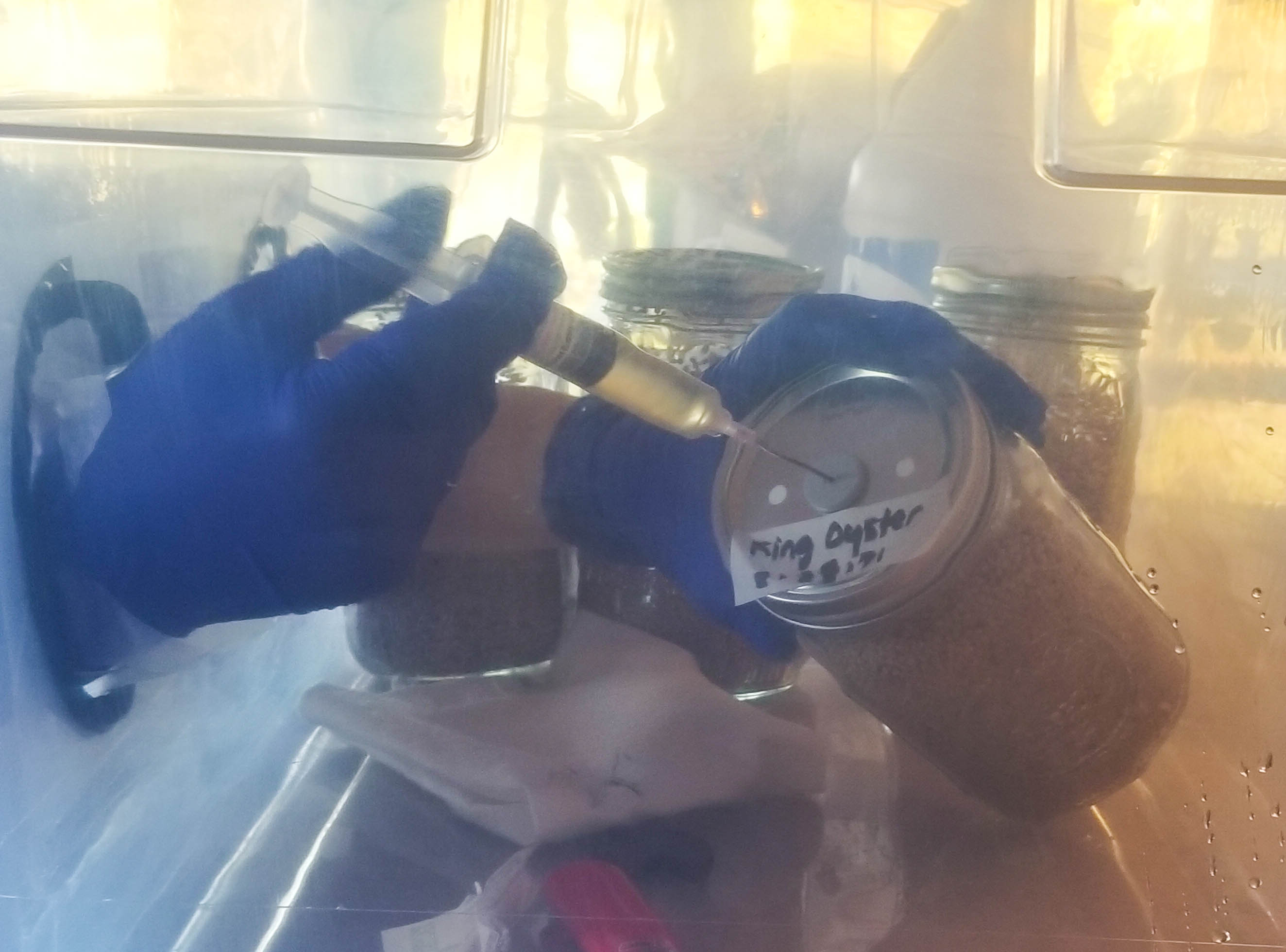
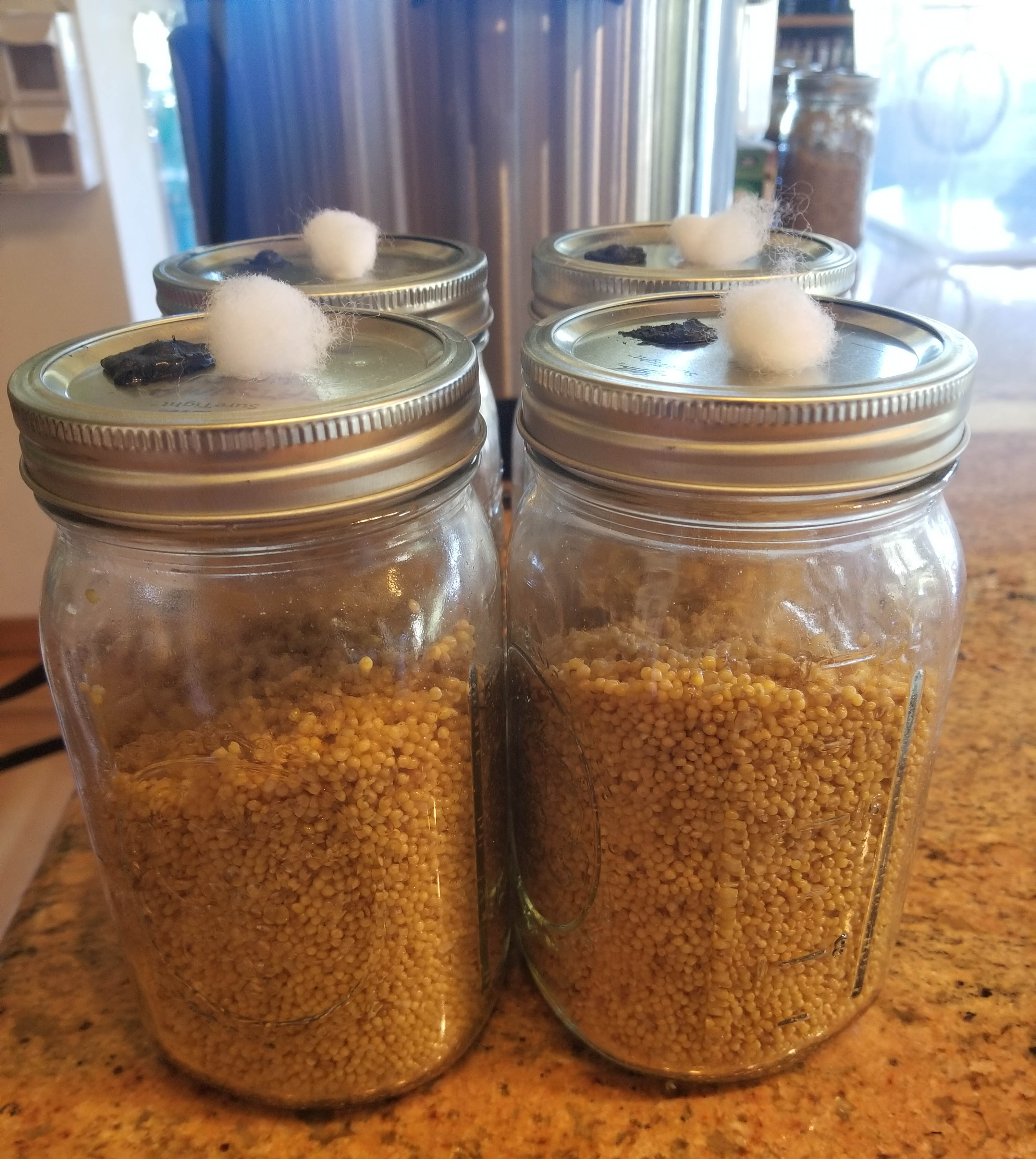
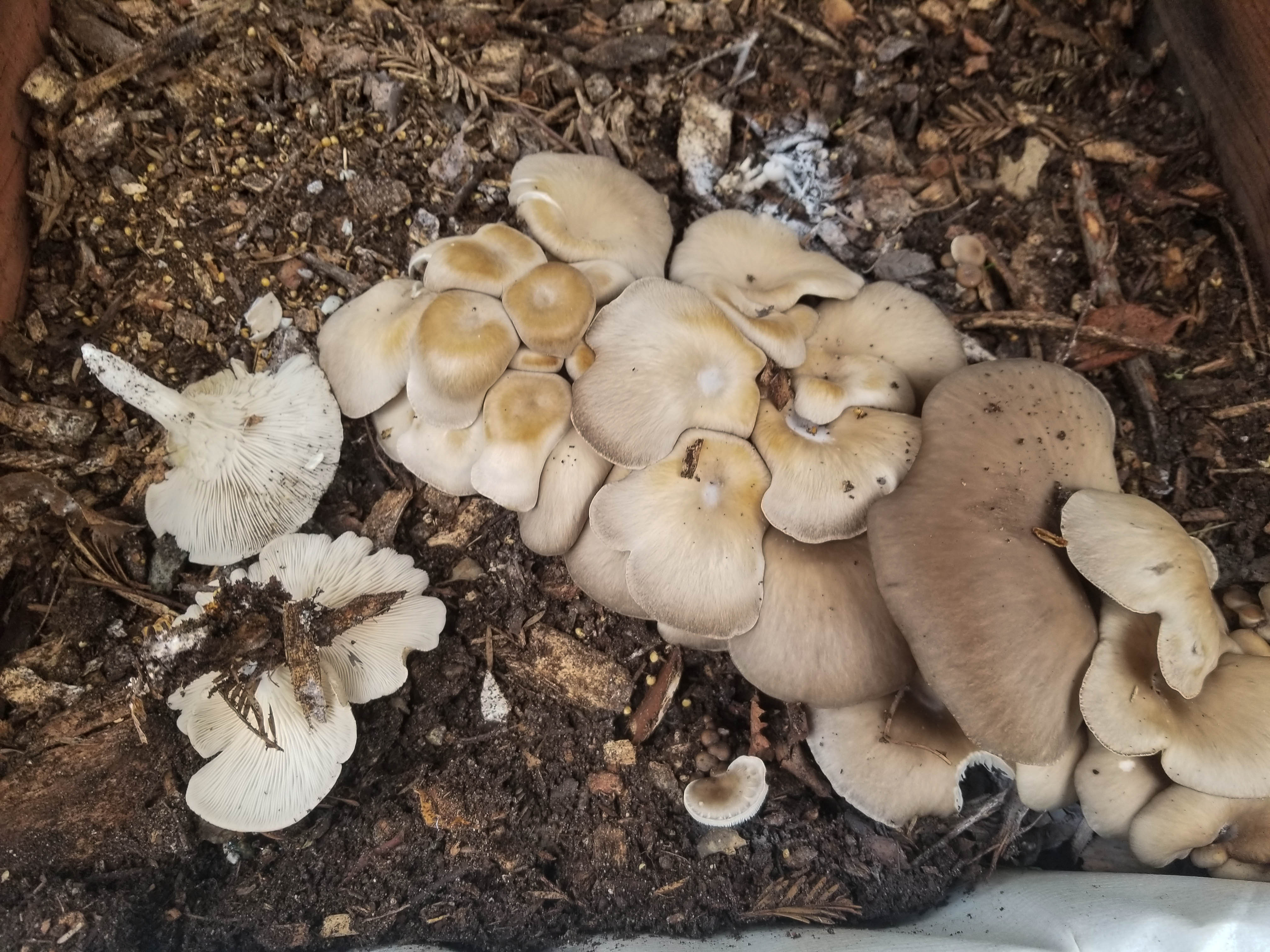
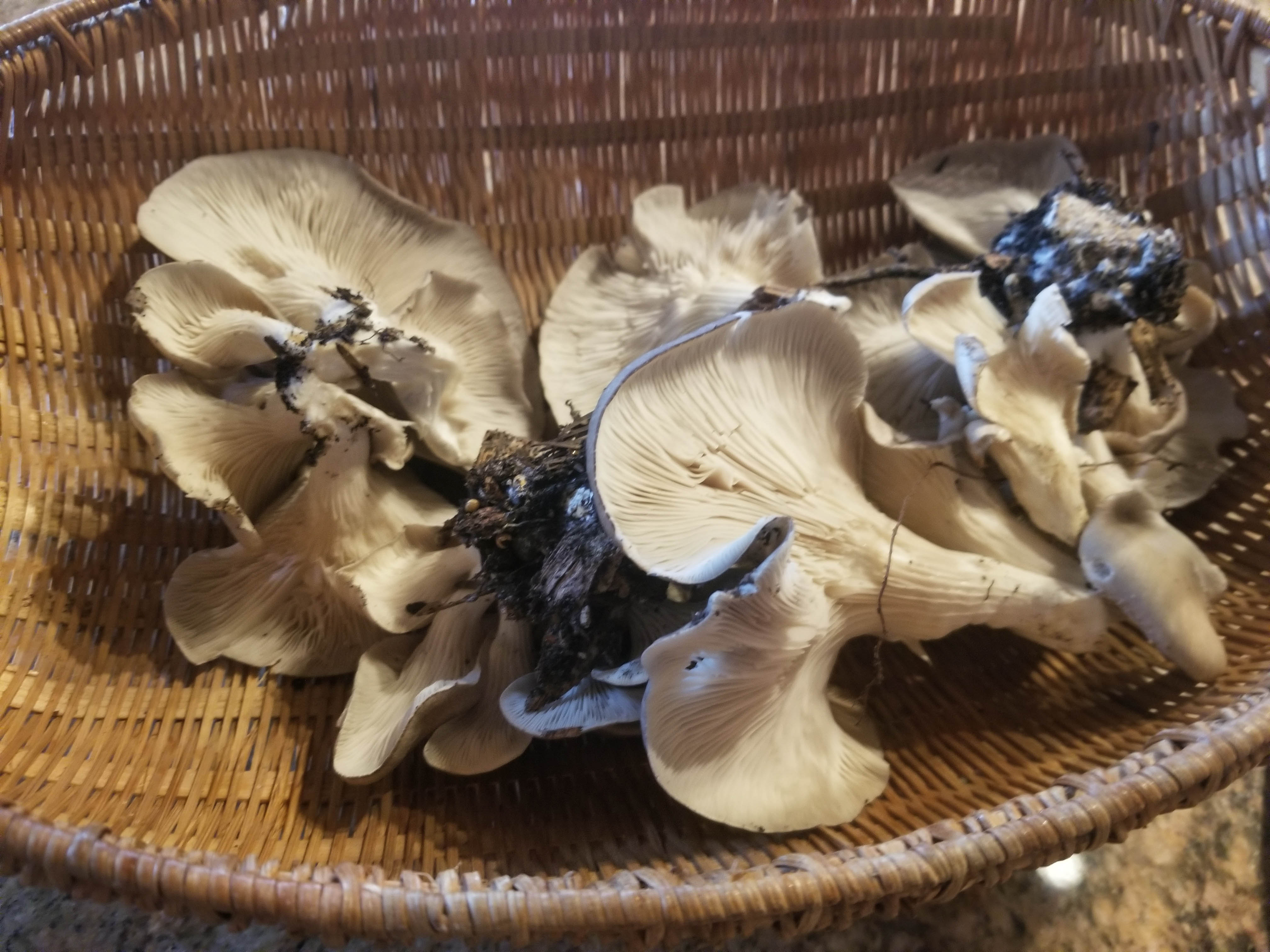

College athletics is big business, and colleges fund expensive athletic programs because it’s great advertising. Coaches make $700,000 or more per year, while professors make about $100,000. Student athletes with much lower GPAs and SAT/ACT scores are admitted to improve game performance – well, because it brings free publicity to the school.
But universities are supposed to be think-tank or research institutions that give students access to the best professors, labs, and departments so that the students can graduate with a solid academic foundation that prepares them for graduate school or careers. Isn’t that why students go to college?
Students across the nation are challenging their universities about how their tuition is allocated. During the pandemic, many students demanded reduced tuition and activity fees because they were forced to take classes online and couldn’t participate in on-campus programs. Sports were cancelled and so too were games – games that were funded through Incidental Fees by student tuition. At the University of Oregon, 10% of the student government budget ($1.7 million) went to the athletics department.
This pandemic has opened Pandora’s box for colleges that were happy to conceal the amount of funds allocated for sports and other activities. When students are struggling to pay tuition, room and board, and other costs directed to their education, it seems only fair that they shouldn’t have to fund athletics programs that they don’t participate in or attend. According to Oregon Athletics, only 65% of students attend games, which means that 35% are funding athletic programs that neither have anything to do with higher education or their personal interests.
Universities are supposed to be think-tank or research institutions that give students access to the best professors, labs, and departments so that the students can graduate with a solid academic foundation that prepares them for graduate school or careers. It’s time for colleges to restructure tuition to make it more affordable and more alignable with student interests, not college’s marketing plans.

I’ve never liked Valentine’s Day. It seems like a Hallmark advertising campaign to beef up sales after the slump when Christmas, New Years, and Super Bowl celebrations are over. A dozen roses can cost over $100, and a dinner for two (pre-pandemic) would cost twice as much as a regular night. But, I am completely supporting our honey bees for Valentine’s Day, and hope you’ll join me.
Roundup (weed killer) has an ingredient (glyphosate) that kills bees. With all that is going on in the world today, we need to protect bees so that they can provide us with the food we need to survive. The last time I went to Home Depot, there was a whole aisle dedicated to pallets filled with Roundup.
I took this picture right outside of Home Depot carrying a little sign that asks Home Depot and Lowe’s to stop carrying Roundup in their stores. If you’d like to bring awareness about Roundup to protect our bees, join the Friends of the Earth organization. There are 3 ways you can support bees during Valentine’s Week:
- Print a little sign (click here)
Take a picture of yourself in front of a Home Depot or Lowe’s sign
Send photos to beeaction@foe.org - Print and sign letter to Home Depot or Lowe’s (click here)
Mail letter to Home Depot or Lowe’s
Email beeaction@foe.org (to let them know you sent the letter) - Post on social media (like me!)
Share this post — it’s easy to do and will bring awareness about Roundup and it’ll put pressure on Home Depot and Lowe’s to stop carrying poisons that are killing our precious bees.
I had fun taking these photos. I also gave signs to friends so they could snap a few photos and printed letters so they could mail them with ease.
#RejectRoundup

The University of California received more than 200,000 freshman applications for fall 2021 – that’s an 18% increase from last year. This came as quite a surprise because we were expecting for applications to decrease due to the pandemic. With parents losing their jobs, students disillusioned about higher education, and uncertainty about careers and the future, most colleges have received fewer applications this year. So why did the UCs receive more applications than they have at any time in its history?
The UCs announced that they will NOT consider either the SAT or the ACT as part of their admissions requirements this year and in the future. Black applicants rose by 22% and Latino students by 12%. That’s about 45% of the total applications to the 9 UC campuses this year.
UCLA received the most freshman applicants, followed by UC San Diego, and then UC Berkeley. For transfer applicants, UCLA received the most applications followed by UC Irvine, then UC San Diego, and finally UC Berkeley.
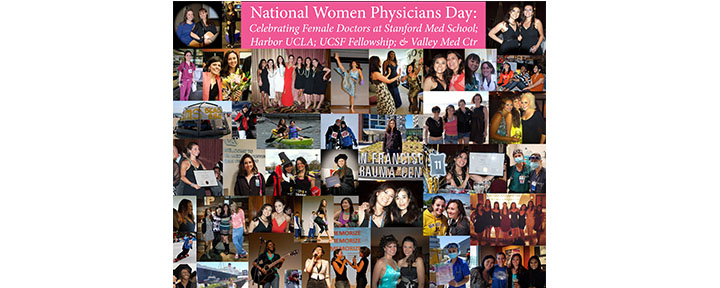
Two hundred years ago today, Elizabeth Blackwell became the first American woman to earn her medical degree. She was allowed to attend medical school as a joke, but proved everyone wrong about her “intellectual inferiority” because she was a woman. In 2019, 50.5% of medical students were women, and 49.4% were men. We’ve certainly come a long way! My daughter Nicole and her fellow female ER doctor friends and colleagues have worked hard to reach their goals, while also having fun. Glad to see female physicians getting recognized today.
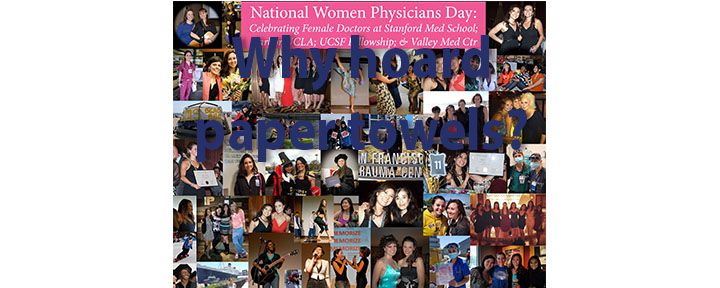
Two hundred years ago today, Elizabeth Blackwell became the first American woman to earn her medical degree. She was allowed to attend medical school as a joke, but proved everyone wrong about her “intellectual inferiority” because she was a woman. In 2019, 50.5% of medical students were women, and 49.4% were men. We’ve certainly come a long way! My daughter Nicole and her fellow female ER doctor friends and colleagues have worked hard to reach their goals, while also having fun. Glad to see female physicians getting recognized today.

Did you know that former president Trump snuck in a final push for his “Patriotic Education” on his last day in office? Historians say that this report released by the Presidential Advisory 1776 Commission is garbage. It focuses on the radicalization of American politics and values from the 1960s forward while eliminating actual historical events and ethnic groups entirely. It’s an attempt to incorrectly instill inaccurate historical facts under the guise of history education reform.
As expected, there are no professional historians on this commission. This was a common practice of placing as executive officers people who have little or no expertise in the areas they were supposed to lead. Wow. This Patriotic Education was put in place to create a larger divide about historical issues like slavery and indigenous people, all while touting “unity” to confuse Americans.
Experts believe that the Biden Administration will discontinue this commission. We need to be vigilant in making sure that corrupt and misleading messages don’t infiltrate our history books, and the minds of our children.
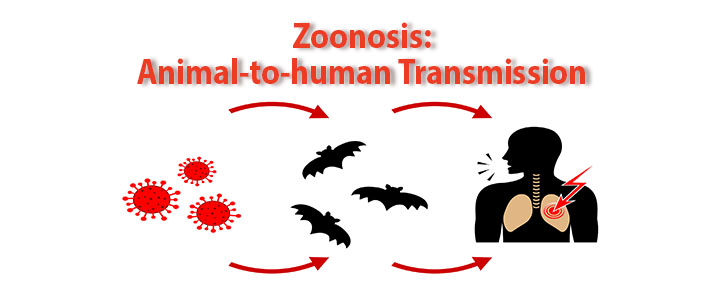
Worried about when the next virus will cause another pandemics? According to Mark Woolhouse, professor of infectious disease epidemiology at the Univ of Edinburgh, three to four new species of viruses are discovered every year, and most of them originate from animals.
The rising number of viruses is a direct result clear-cutting rainforests and wildlife trade. When their habitats are destroyed to make way for grazing cattle (for beef) or wildfires burn thousands of acres, the wildlife move closer to cities where they carry diseases that are transferred from monkey, bats, or rats, to humans. This is called zoonosis, or animal-to-human transmission.
A 2017 study determined that 25 of the 27 Ebola outbreaks in Africa began in places where deforestation took place two years prior. They’re not sure how the virus leaps from animals to humans, but they believe it might take place when wild animals are butchered.
“Bushmeat” is a traditional source of protein for people who live in the Congo rainforests. It has become a delicacy and 5 million tons of bushmeat is traded globally each year. Smoked colobus monkey carcass sells for $22, and has been hunted to extinction in parts of the Congo.
Trading live animals like young crocodiles, tortoises, and chimpanzees is a huge market for pet collectors. The avian flu (H5N1 virus) and SARS both emerged from the transport of these exotic animals to metropolitan cities. The next virus that can cause another more dangerous pandemic can be brought from the Congo to Europe or the United States to serve the exotic tastes of the rich.
We need to protect the forests — to protect humanity.

It seems that the best way to prevent getting COVID-19 or airborne viruses is to reduce the chance of breathing in the virus. So, wearing good quality masks and facial shields, a washing hands with sudsy soap are the first line of defense. Then, staying far away from people. And, filtering the air in your home or office with a HEPA filter. But, what about the air quality in your local grocery store, doctor’s offices, and other places you frequent?
Infectious disease experts at UCSF recommend using a CO2 monitor to determine the amount of air that is re-breathed in stores, restaurants, and offices. While we aren’t really concerned about the actual CO2 in the room, the monitor calculates the exchange of fresh air indoors.
I just purchased a CO2 monitor for under $50 and tested several places that I visit. First, I checked my house and was happy to see that it was fine at about 500 ppm. But my car was up to 1400 ppm. I checked the lab where I got some blood work done and was shocked that it was over 3000 ppm! I asked the receptionist when they would see me and told her that I’ll return at that time. Meanwhile, I quickly walked out and waited outside where the air was a healthy 450 ppm.
Seems to me that using CO2 monitors can help us make smart choices about where we go and how long we can stay. Restaurants, movie theaters, and schools would be wise to post their CO2 numbers to encourage rational re-opening of services.
For me, I’m planning on wearing my mask and face shield when interfacing with others in close quarters when I need to. I carry my CO2 monitor in my purse and use it every time I walk into an indoor space to make sure the numbers are in the 400-500 ppm range.
